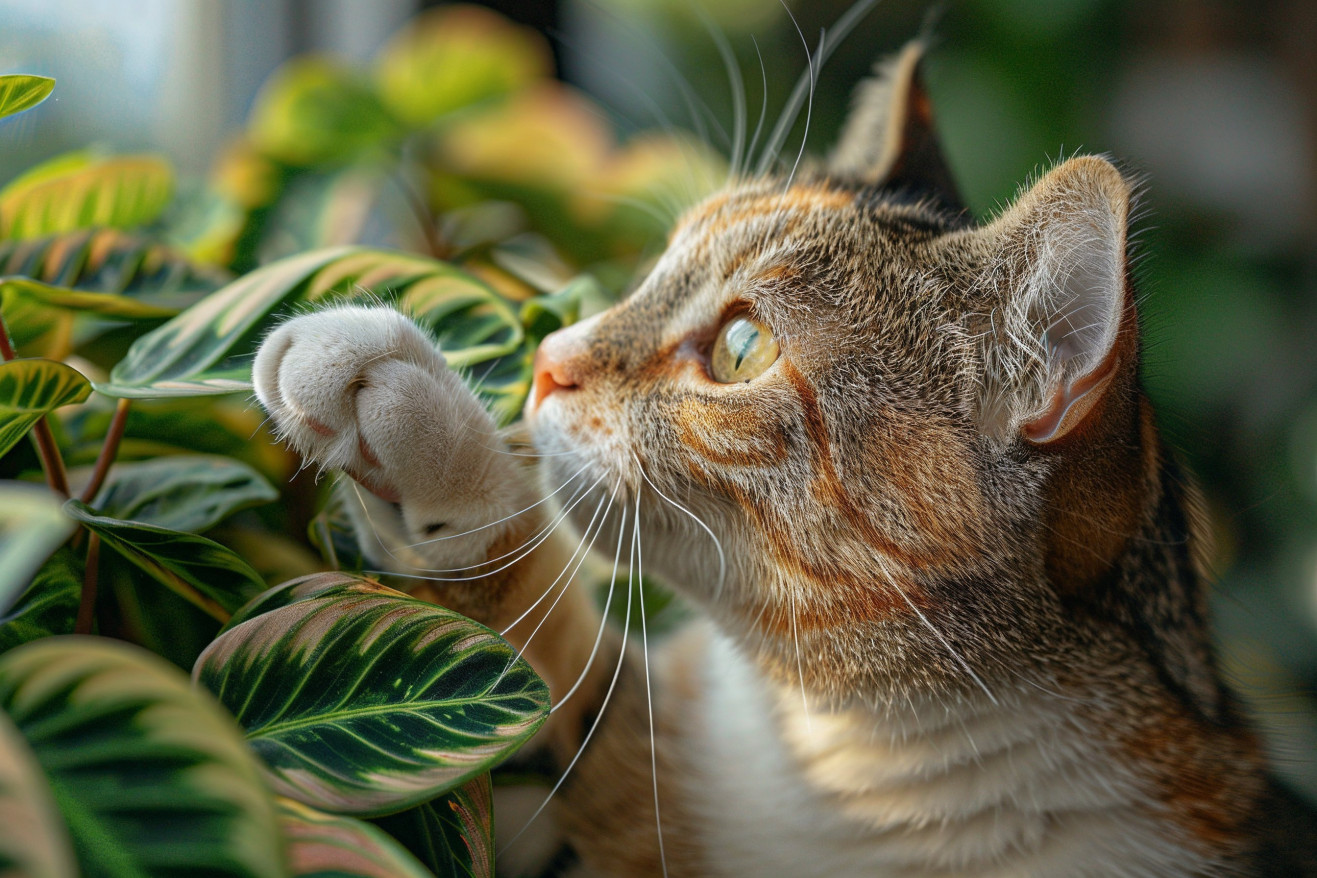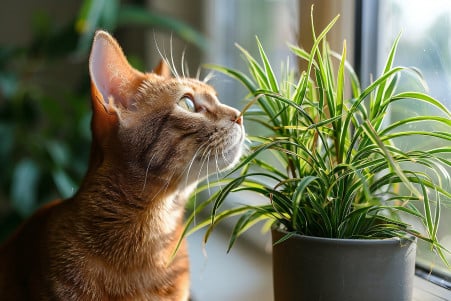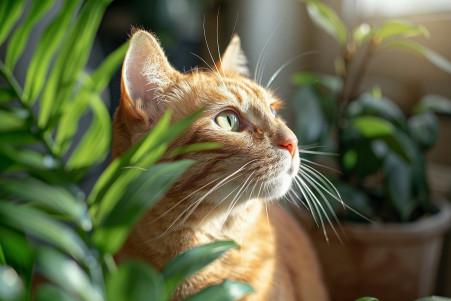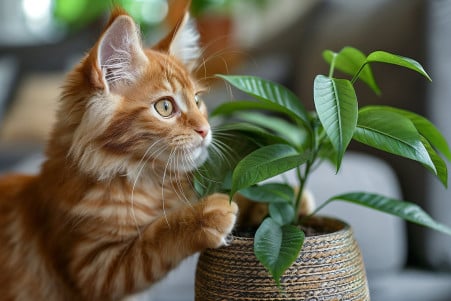Do Prayer Plants Hurt Cats? What Pet Parents Should Know
1 May 2024 • Updated 30 April 2024

Prayer plants are cute, easy-to-care-for plants that are a staple in many homes, but if you have a cat, you might be worried about the potential danger of your pet playing with—or even eating—their moving leaves. While not extremely poisonous, eating prayer plant leaves can lead to oral irritation, vomiting, and diarrhea in cats, so it's probably best to keep them away from your furry friends.
To help pet parents better understand the situation, we've investigated the work of veterinary toxicologists and other animal care experts. This article will cover the compounds in prayer plants that may be harmful to cats, how dangerous they are based on how much a cat eats, and what you can do to make sure your plants and your cats are safe.
Are prayer plants toxic to cats?
Other Benefits of Prayer Plants for Cat Owners
In addition to being non-toxic, pet-friendly houseplants, prayer plants have several other potential advantages for cat owners. They are thought to have natural air-purifying properties and can help remove common indoor toxins like formaldehyde and benzene from the air.
The folding and unfolding of prayer plant leaves is considered a soothing, spiritual sign that can help promote a sense of calm. Tending to these plants can even be a form of meditation or mindfulness. Their interactive growing habits, which cause their leaves to open and close in response to the sun, can provide a hands-on way to stay in tune with the natural world.
Prayer plants are also easy to care for, so they can be a low-maintenance option for cat owners who are always on the go. Plus, their colorful leaves can bring a bit of the outdoors inside, which can be good for both you and your cat. If you take the right precautions, they can be a great addition to your home.
How to Take Care of a Prayer Plant When You Have Cats
Prayer plants like medium to bright, indirect light and temperatures between 65-85°F. The Sill explains that they need well-draining, slightly acidic soil and regular watering, with the soil drying out halfway between waterings.
Prayer plants also like high humidity, and you can increase the humidity around your plant by misting it, using a pebble tray, or keeping it near a humidifier. The Spruce says that while they can tolerate average room humidity, they prefer higher humidity.
Pruning and removing dead leaves can help keep the plant looking good and keep cats from eating the leaves. Gardener's Supply warns that while prayer plants don't need regular pruning, it can help them grow in a more compact way.
You'll also want to make sure you're regularly checking for pests like spider mites or mealybugs. The Spruce explains that prayer plants are often susceptible to these common houseplant pests and may need to be treated with a natural insecticide.
If Your Cat Eats a Prayer Plant
If your cat eats a prayer plant, you should watch for signs of drooling, vomiting, or diarrhea. Although prayer plants are generally considered to be low in toxicity, overeating can result in gastrointestinal upset. If your cat's symptoms don't go away or get worse, call your vet or animal poison control right away.
Make sure to tell the vet what kind of plant your cat ate and how much you think they consumed. The vet will let you know if your cat needs to be treated and if so, whether that treatment will involve vomiting or medication.
Other Pet-Safe Houseplants
If you have cats and are looking for other houseplants that are safe to bring into your home, there are plenty of non-toxic, pet-friendly options to choose from. Other safe plants include spider plants, Boston ferns, African violets, Chinese money plants, and a variety of succulents such as echeveria and Haworthia.
Meanwhile, palms like the parlor palm, ponytail palm, and areca palm are all safe for cats and dogs, according to The Spruce. Other pet-friendly houseplants you might want to look into include air plants, friendship plants, Peperomia species, and select orchid varieties.
However, it's important to note that, as with any new plant, you should always check its toxicity and take steps to ensure that your pets can't access it, according to BBC Gardeners World Magazine.
How to Keep Peace Between Your Prayer Plant and Your Cat
With the right planning and a little extra effort, you can keep your prayer plant and your cat safe and happy in the same home. Keeping your prayer plant in a high place, a hanging basket, or a room that your cat can’t access will help ensure that your cat doesn’t eat it.
Meanwhile, make sure that your cat has plenty of toys, scratching posts, and cat-friendly plants like cat grass to keep them from eating your houseplants. Finally, make sure that you keep an eye on both your plants and your pets to make sure that they’re healthy and happy. By learning about the needs of your prayer plant and your cat, you can make sure that both of them are happy and healthy in your home.


